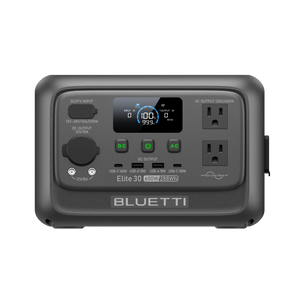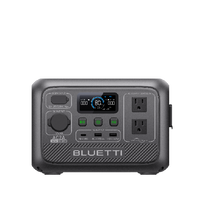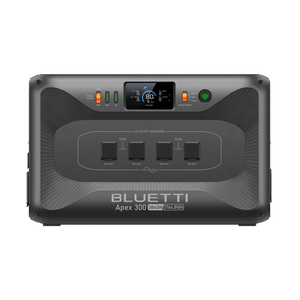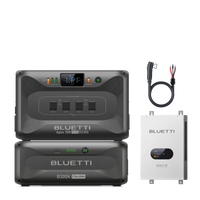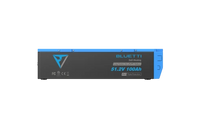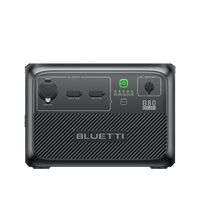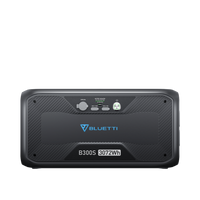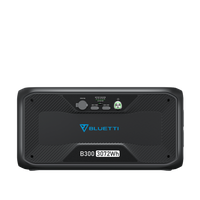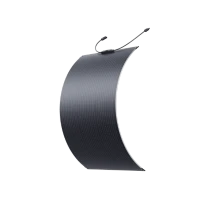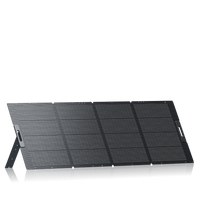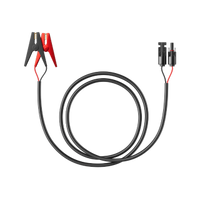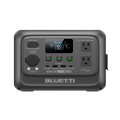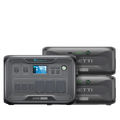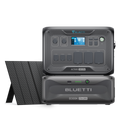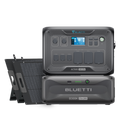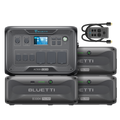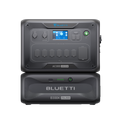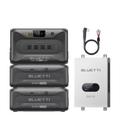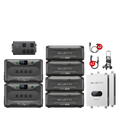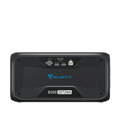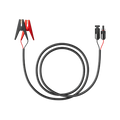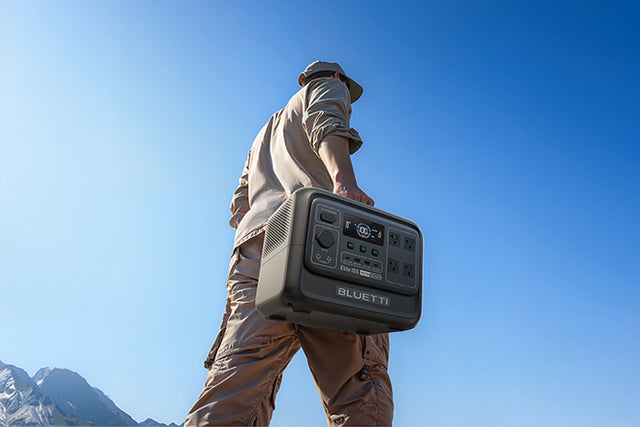Your cart is empty
Shop our productsAre you looking for a way to save on your home energy bills? Prepaid gas and electric meters (also known as prepayment meters) are an increasingly popular way to do just that. By allowing you to pay for your energy before you use it, prepayment meters help you budget your energy usage and ensure that you’re not left with a surprise bill. In this article, we’ll provide a comprehensive guide to everything you need to know about prepaid gas and electric meters, from how they work and who they’re suited to, to the different types of meters available and how to switch to one.
What’s a Prepayment Meter? How Does It Work?
A prepayment meter, also known as a prepaid or pay-as-you-go meter, is an electricity and gas meter that allows users to pay for their energy in advance. With a prepayment meter, you don’t receive an energy bill, instead, you pay for your energy consumption in advance through a smart card, key or voucher. Prepayment meters offer benefits to both energy suppliers and customers, as they allow customers to top up their energy as and when they need it, rather than waiting for a bill to be issued.
For those who have a prepayment meter installed, it’s important to understand how to use it and the benefits that come with it. Prepayment meters can be used for both gas and electricity, and they work by allowing customers to top up their energy balance whenever they need to. To do this, customers use a smart card, key or voucher to add credit to their account, and this credit is then deducted each time the customer uses energy.
Prepayment meters give customers greater control over their energy consumption, as they can top up as and when they require, meaning they can plan their energy use and keep track of how much they’re spending. In addition, prepayment meters can help those on low incomes to manage their energy costs, as they can spread the cost of energy over several top-ups, rather than receiving one large bill.
For energy suppliers, prepayment meters help manage energy supply, as they allow suppliers to monitor customer use and allocate energy accordingly. Prepayment meters also help manage bad debts, as customers can only use the energy they have paid for, meaning suppliers can reduce the amount of debtors.
prepayment meters are a beneficial way to pay for energy, as they give customers greater control over their energy costs and help suppliers to manage their energy supply. However, it’s important to remember that with prepayment meters you will have to pay for your energy in advance, meaning you may have to pay more for energy than with a traditional payment method.

Can I have a smart meter with a prepayment meter?
In short, the answer to this question is yes — you can have a smart meter with a prepayment meter. Smart meters are the new standard for energy meters, and they allow consumers to have better insights into their energy usage and bills, leading to better energy efficiency. Smart meters are now becoming available with prepayment meters, allowing customers to take advantage of the perks of smart meters while also ensuring that they have more control over how much they pay for their energy bills.
A smart meter with a prepayment meter works in a similar way to a regular smart meter. It allows you to monitor your energy usage in real-time, so you can be aware of how much energy you are using and the associated costs. However, the difference is that with the prepayment meter, you pay for your energy in advance. This system reduces the chances of energy debt, as customers pay for only what they use as they use it.
Smart meters with prepayment meters also come with other benefits. You can top up your account online, with a mobile app or via text message. This means that it is easy and convenient to buy the electricity or gas that you need without having to wait in line at the energy provider’s store. You also have the option of setting up regular top-ups, so you don’t have to manually top up each time.
Smart meters with prepayment meters are also beneficial for those who live in a rented property, as it allows tenants to manage their own energy use, rather than relying on the landlord. This system is also beneficial for landlords, as they will no longer have to worry about tenants not being able to pay their bills.
having a smart meter with a prepayment meter can be a great way to manage your energy usage and costs more effectively. You can have more control over your bills and reduce the chances of running up energy debt. Smart meters with prepayment meters are becoming more and more popular, and they offer great benefits for both landlords and tenants.

Who would use a prepaid meter?
Prepayment meters are an increasingly popular option for consumers who are looking to better manage their energy usage and take control of their bills. Paying in advance with a prepaid meter can help to reduce the risk of arrears and debt, and allow consumers to easily budget their energy costs. It can also be beneficial for those households on a tight budget, as well as those with variable incomes. Furthermore, with no credit agreement, there will be no unexpected bills.
Prepayment meters can also be an attractive option for those who are moving in to a new property. These consumers may not have a good credit history, which would make it difficult to obtain a standard energy contract. Prepayment meters can allow them to access energy services, as they do not require a credit check.
Tenants who move home frequently may also find that a prepaid meter is a viable option. With no lengthy contract to worry about, this offers a reasonable solution for those with more unpredictable lifestyles.
Technology is also advancing in the prepaid energy market. Smart meters are providing users with greater control over their energy usage. They allow consumers to top up their meters remotely, online and in store. This offers convenience, while also allowing users to better manage and budget their energy costs.
a prepaid meter is a suitable solution for consumers who want to take control of their energy bills. Those with a poor credit history, landlords, tenants with short-term accommodation, or people on a tight budget can all benefit from the flexibility of a prepaid meter.
>What are the Pros and Cons of Prepayment Meters?
Prepayment meters offer a unique way to pay for gas and electricity. Customers can pay in advance for the energy they use, instead of receiving a bill at the end of the month. This is beneficial to those who may not be able to afford to pay a large energy bill all at once, or those who would prefer to pay for their energy needs as they go. However, prepaid meters do have both pros and cons.
The major advantage of using a prepayment meter is that customers can better manage their energy consumption and budget. Customers can pay for their energy in small, manageable amounts, which makes it easier to keep track of their energy usage and keep their energy bills in check. Additionally, customers can use prepaid meters to limit the amount of energy they use, as they will only be able to top up until they reach their predetermined budget.
Another advantage of prepayment meters is their convenience. Customers can easily top up their meter from the comfort of their home or, in some cases, even from their mobile devices. This makes it much easier to manage your energy bills than traditional methods, such as writing cheques or visiting a post office.
The main disadvantage of using a prepaid meter is the cost. Generally, customers will be charged a higher rate for the energy they use than they would with a traditional meter, as suppliers have to pay a fee for the use of the meter. Additionally, customers may also face extra fees, such as installation or maintenance fees, when they switch to a prepaid meter.
customers may experience limited access to energy and lower levels of service with a prepaid meter. This is because suppliers are not obligated to help customers who cannot afford to top up their meter. As such, customers may find themselves without access to energy if they do not top up their meter in time.
while there are advantages to using a prepayment meter, such as budget control and convenience, there are also some drawbacks, such as the extra cost and limited access to energy. It is important to consider these pros and cons carefully before deciding whether a prepaid meter is the right choice for you.
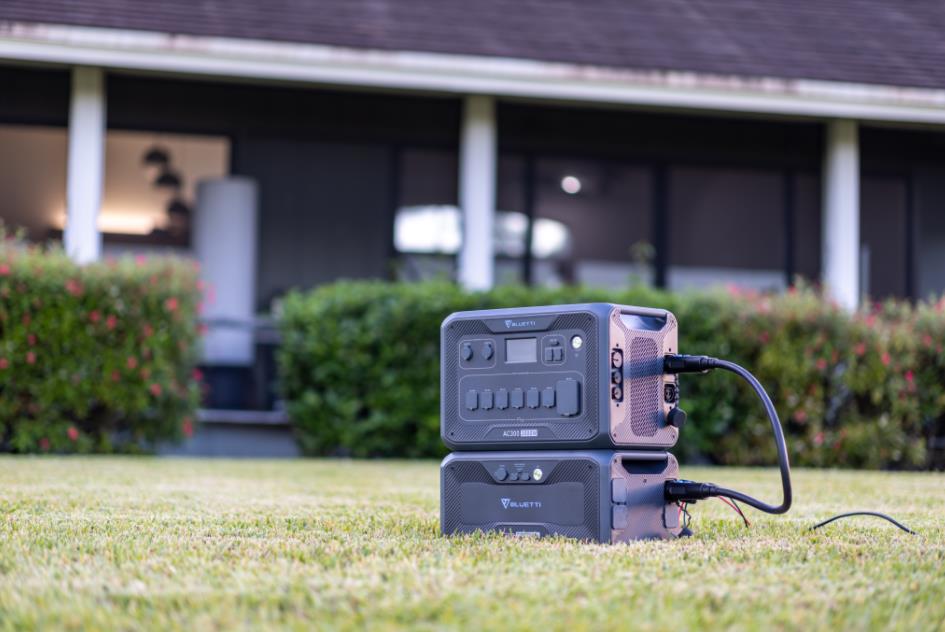
What is the prepayment price cap and the Energy Price Guarantee and how do they apply to prepayment meters?
The prepayment price cap is the maximum amount of money that energy suppliers are able to charge for energy that is paid for using a prepayment meter. This cap is reviewed each year, and any changes made to the cap are applied to all suppliers and customers across the UK. The current prepayment price cap is set at £1,042 for a typical dual-fuel household over the course of 12 months.
The Energy Price Guarantee was put in place by the regulator Ofgem in April 2015. It is designed to protect prepayment customers from paying higher prices than those who are billed quarterly or annually for their energy. This guarantee means that the prices for prepayment energy will remain at or below the price cap for as long as the customer is on the same energy tariff. This protection applies to all prepayment customers, regardless of their supplier or tariff.
These price caps and guarantees not only protect customers from being charged too much for their energy, but they also ensure that suppliers are not profiting from their prepayment customers. This helps to keep the playing field level between prepayment and bill-paying customers.
Although all energy suppliers must adhere to the prepayment price cap and the Energy Price Guarantee, it is important to do research to find the best deal for you. By shopping around and comparing prices, you could potentially save money on your energy bills.
Can I change my prepayment meter to a regular one?
The short answer is yes, you can change your prepayment meter to a regular one. However, it's important to note that the process for doing so is complex and usually involves a few steps. First, you need to contact your energy supplier and request a regular meter to replace your prepayment meter. In some cases, your supplier may be able to install a replacement meter at no cost. If the cost of installation is required, it will depend on the type of meter used and the layout of your home. Your supplier will be able to give you an estimate of the cost before installation.
After agreeing to the installation of a regular meter, your energy supplier will arrange for an engineer to visit and install the replacement meter. Installation should be completed within a few days, but it's important to make sure you have enough funds in your account for the engineer to enter your home. You may also be required to pay a deposit in certain circumstances, such as if you are switching energy suppliers. It's important to make sure you understand all the costs associated with the installation of the regular meter before agreeing to the work.
Once the regular meter is installed, you will no longer need to top up your prepayment meter. Instead, you can manage your energy usage and billing in the same way as any other electricity or gas customer. However, it's important to keep in mind that you may not be eligible for some of the deals and discounts offered to other customers. Your energy supplier should be able to provide more information on this.
In summary, you can change from a prepayment meter to a regular one. However, the process is complex and usually involves installation costs and other fees. You will also need to ensure you have enough funds in your account for the engineer to enter your home. Once the meter is installed, you can manage your energy usage and billing in the same way as any other customer.
1. How long does it take to set up a prepayment meter?
How long does it take to set up a prepayment meter?
Setting up a prepayment meter usually takes around an hour in total. However, it can take longer depending on the complexity of the project. It is important to consider the time it takes to assess the area, the meter location and the accessibility of the area if it is a hard to reach location. Additionally, connections need to be made to the supply networks and the meter needs to be installed.The installation process can be completed by a qualified professional. During the process, the current meter is removed and the new prepayment meter is installed. The access to the meter may need to be set up through a secure key, and the connection to the electricity and gas networks needs to be established.
Following the installation, the system needs to be set up and connected to the supplier so that the payments can be made. This can sometimes take a few days, depending on how long the supplier takes to activate the account. Also, the user must ensure that the meter is correctly set up so that they can easily make payments.
it usually takes around an hour to install a prepayment meter, although this may vary depending on the complexity of the job. It is important to bear in mind that there will be additional time for connecting the meter to the supplier and setting up the system.
2. How do I top up my prepayment meter?
Topping up your prepayment meter is easy. Depending on the type of meter you have, you can top up with coins, cash, or a payment card. If you have a Smart Meter, you can top up online. To get started, locate the top-up point on the meter and insert the payment card or coins. Alternatively, you can visit your local PayPoint store and use cash. Once you have selected the amount you wish to top up, the money will be credited to your account and your meter will be updated. It is important to keep track of your meter readings and top ups, as this will help you keep track of your energy usage and costs, ensuring that you always have enough credit for your energy supply.
3. What happens if I forget to top up my prepayment meter?
What happens if I forget to top up my prepayment meter?
If you forget to top up your prepayment meter then your energy supply will be cut off until you pay. Depending on the provider, they may also charge you additional fees for the reconnection of your supply. In addition, if you wait too long to top up your meter, you may be charged a fixed fee which could be up to £7 depending on the supplier.It is important to keep track of the balance of your prepayment meter and ensure that you top up on time. If you suspect you might forget to pay, you can opt for prepayment meter auto top-ups. This will automatically top up your meter when the balance runs low, meaning you don’t need to worry about keeping track of your balance.
It’s important to read any information provided by your energy provider, as it will inform you of the best way to stay on top of your payments. If you’re still unable to stay on top of payments, then your provider may offer you flexible payment options that can reduce the impact of debt.
if you ever find yourself struggling to pay your bills, you can use the Ofgem Energy Assistance Scheme to access energy grants, discounts or advice to help.
4. Are there any additional charges associated with using a prepayment meter?
Are there any additional charges associated with using a prepayment meter?
While some suppliers will charge additional fees to install prepayment meters, there are usually no other additional fees associated with the use of a prepayment meter. Customers typically make payments through a card or token that is inserted directly into the meter to add credit. Banks and other payment providers may charge a fee for processing the transactions, but these fees are usually quite minimal and should be made clear in the terms and conditions when signing up for the service. Some providers may also offer additional services such as automatic top-ups where the meter is automatically topped up when the balance falls below a certain amount. This service may incur an additional fee, but again, this should be made clear by the provider. the fees associated with prepayment meters are generally quite small, and customers should check with their suppliers to ensure they are getting the best deal for their needs.5. Are prepayment meters connected to the smart grid network?
Are Prepayment Meters Connected to the Smart Grid Network?
The short answer is yes, in some circumstances prepayment meters can be connected to the smart grid network. This is particularly true for utilities that want to deploy state-of-the-art technology to further enable grid-connected customer-sited energy management systems. In other words, if the utility is already using a smart grid infrastructure, then it is likely that prepayment meters can be connected to the network.However, it is important to note that it is not a universal requirement that prepayment meters be connected to the smart grid network. In fact, many prepayment meters are not connected to any smart grid system. Of the ones that are connected, the information they are able to collect and relay to the utility is limited to consumption and payment information only. That being said, being connected to the smart grid network can provide additional benefits such as improved efficiency and a better customer experience.
Ultimately, the decision as to whether or not to connect prepayment meters to the smart grid network should be determined by the utility depending on their individual requirements and goals. Regardless, the availability of prepayment meter technology that is compatible with the smart grid network could prove to be a useful tool for utilities that are looking to increase customer engagement and optimize energy management.
We hope this guide has helped you better understand prepaid gas and electric meters. As you can see, there are many advantages to having a prepayment meter installed in your home, from convenience to cost savings. As with any large purchase, it is important to weigh all of your options before making a decision, as prepaid gas and electric meters may not always be the best option for every household. We encourage you to do some research and contact your local utility company to learn more about their specific prepaid meters and how they can benefit you.
Shop products from this article
Be the First to Know
You May Also Like
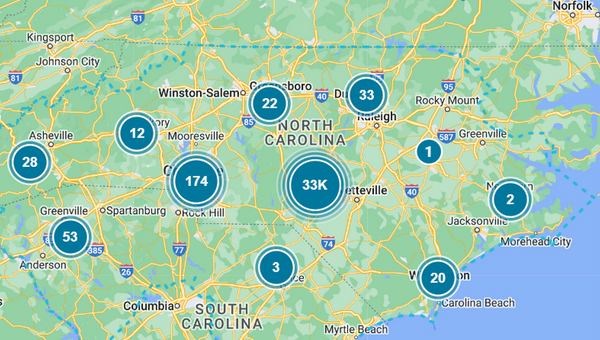
How to Pay Your Duke Energy Bill: A Comprehensive Guide
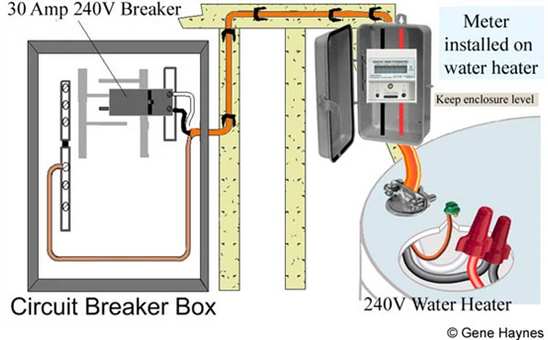
How Many Amps Does an Electric Water Heater Use? (2025)

Best Camping Games to Make Your Adventure Unforgettable
Camping happens to be the only way one can relax in nature and catch up with buddies and family while indulging in some of the most memorable activities. Besides stories...
